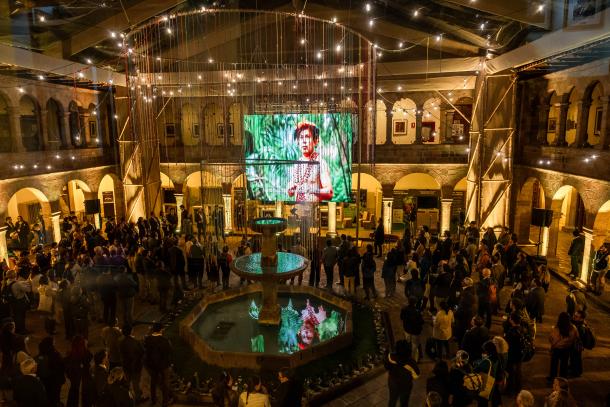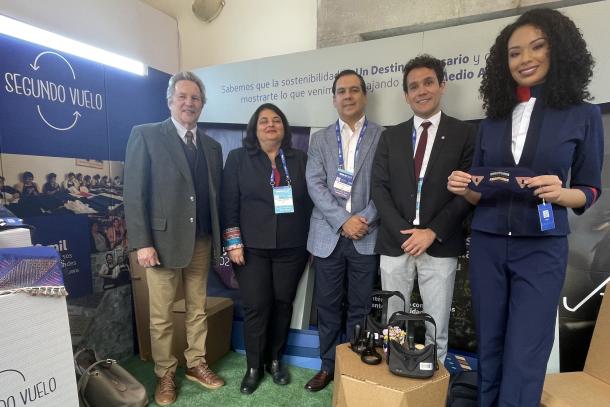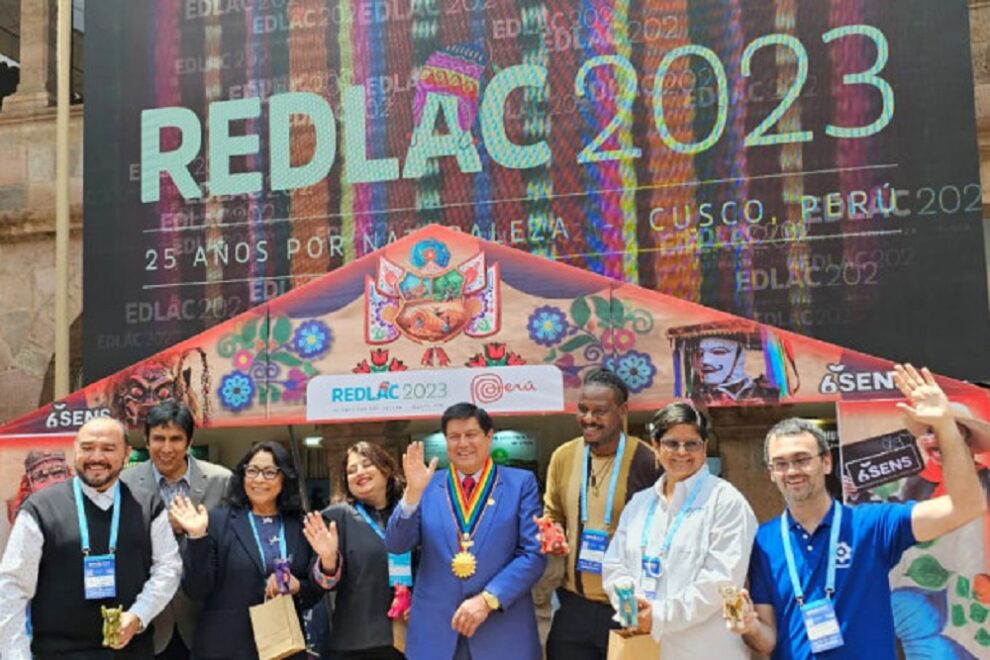The role of Indigenous Peoples and the value of traditional knowledge for biodiversity conservation and climate change adaptation were made visible.
UNESCO Peru was an active participant in the XXV International Congress of the Network of Environmental Funds of Latin America and the Caribbean (RedLAC) that took place in Cusco, Peru, highlighting the role of indigenous knowledge in the conservation of biodiversity and climate change adaptation and the need to re-think the relationship between humans and nature.
The RedLAC Congress, which took place on 23-26 October, brought together more than 350 environmental leaders interested in environmental finance, biodiversity conservation and the protection of the biodiversity in Latin America and the Caribbean. UNESCO Peru played a prominent role in giving visibility to representatives of indigenous peoples, with special attention to the role of women in the design and implementation of environmental programs and projects; as well as highlighting the role of indigenous knowledge as an effective tool to address environmental challenges.

UNESCO
“UNESCO resolutely supports the leadership of Amazonian indigenous women, one of the most disadvantaged populations. Their participation in spaces such as RedLAC is vital, which is why UNESCO has made it possible for them to attend this congress,” said Guiomar Alonso, UNESCO Representative in Peru. She also pointed out that UNESCO favors the leadership of Indigenous women in the implementation of the Amazon Biosphere Reserves Project, with a focus on 8 biosphere reserves executed thanks to the alliance between UNESCO and LVMH.
The voice of Indigenous women leaders was heard at RedLAC23. Tarcila Rivera, indigenous representative and president of CHIRAPAQ, emphasized the importance of ensuring that indigenous peoples have access to their full rights, including the management of their territories and the promotion of their languages. Sanilda Allui, from the Awajún people and regional councilor of Moyobamba, emphasized that the participation of Indigenous communities in conservation projects is essential to ensure a more sustainable and less predatory relationship with nature.

UNESCO
On the other hand, UNESCO Peru’s participation was also aimed at promoting dialogue on direct and semi-direct funding mechanisms for indigenous peoples, as advocated, among other recent agreements, by the 2022 Kunming-Montreal Global Biodiversity Framework / Convention on Biological Diversity. “Indigenous Peoples have the right to protect and develop their cultural heritage; as well as, their knowledge, sciences, technologies and cultural expressions, including human and genetic resources, seeds and medicines” emphasized Nigel Crawhall, head of the Local and Indigenous Knowledge Systems (LINKS) programme.
Nigel gave a keynote lecture on the “Importance of Indigenous Peoples’ and local communities’ knowledge” and provided guidelines for co-production between indigenous knowledge and “modern” scientific knowledge. This implies respecting their rights and interests, promoting dialogue between generations and adding value without harming ancestral knowledge systems.

UNESCO
Signing of Memorandum of Understanding with Profonanpe
In a joint effort to strengthen the participation of Indigenous Peoples and local communities in biodiversity protection and climate change adaptation interventions, UNESCO and PROFONAMPE signed a Memorandum of Understanding. “We will work together to design and implement more efficient actions seeking new forms of ecological justice” said Guiomar Alonso Cano.
In this regard, the UNESCO Representative in Peru highlighted the commitment of Minister Albina Ruiz, of the Ministry of the Environment, to the exercise of collective rights of Indigenous Peoples, particularly with the creation of the fund for indigenous women.
Guiomar also met with Jorge Oviedo, president of RedLAC 2023, with whom she committed to support the strengthening of the working group on Indigenous Peoples in Latin America and the Caribbean. This, contributing with the achievements of the work being done by UNESCO in the region, in particular the “Framework of Action for the implementation of the rights of Indigenous Peoples and Afro-descendants in Biosphere Reserves in Latin America and the Caribbean” that commits the 136 Biosphere Reserves in Latin America.

UNESCO
The congress was also an opportunity to meet with partners and allies to discuss the UNESCO Network of designated sites, i.e. World Heritage Sites, Geoparks and Biosphere Reserves. These areas, which cover more than 10% of the planet’s surface, are located in biodiversity hotspots and offer unique models of sustainability. In Peru only, more than 2 million people live in 8 biosphere reserves – occupying a territory of almost 13 million hectares.
The biosphere reserves reconcile sustainable socio-economic development, environmental conservation, and education and research.
Furthermore, UNESCO and LATAM, founding partner of the Pact for Culture 2030, exchanged views on biodiversity, climate change, sustainability and the ongoing collaboration of the ‘Segundo Vuelo’ program, through the Culture for Sustainable Development project, where 66 craftswomen from Cajamarca, Lima and Ayacucho give new life to disused materials, transforming them into products that revalue our cultures.

UNESCO
UNESCO’s participation in RedLAC 2023 reinforces its commitment to models of territorial management, protection of biosphere reserves and other UNESCO designated sites, as well as to the promotion and protection of indigenous peoples’ knowledge and cultures and their contribution to the conservation of the environment and biodiversity. All of these are essential action strategies to change course, reverse the massive alterations to terrestrial and marine ecosystems caused by human activity, and begin to reestablish the relationship with nature.
Source : Unesco











